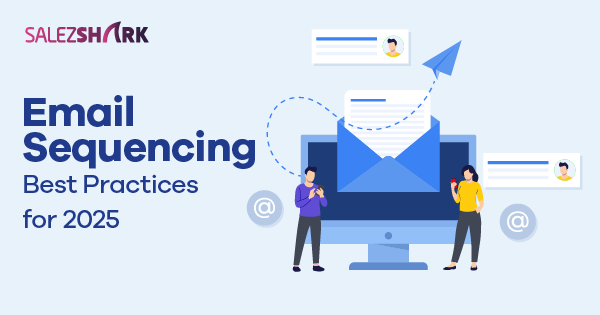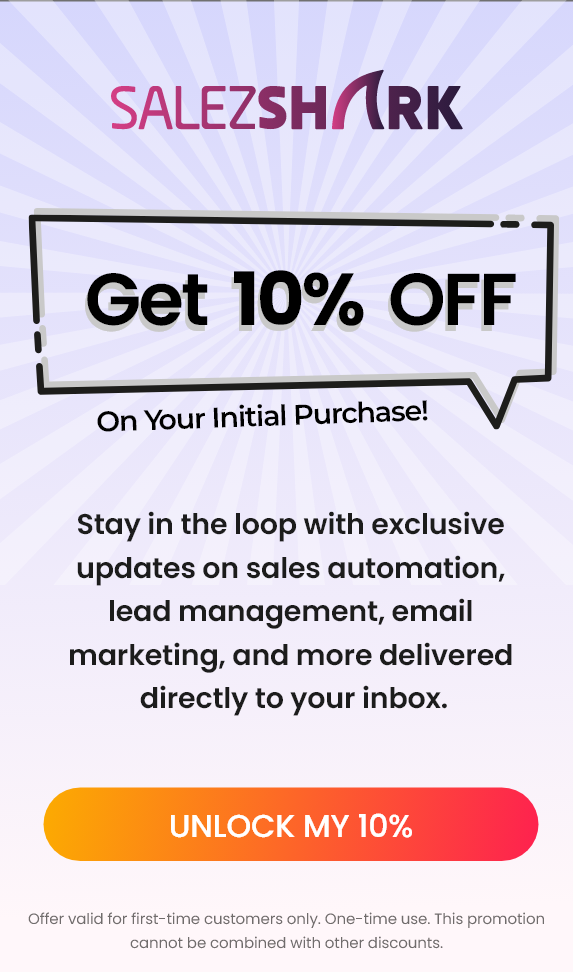In the world of digital marketing, email sequencing has become an essential tool for businesses. For 2025, it’s even more important to get it right. Email sequencing is the art of sending a series of emails to potential customers, with the aim of guiding them down the sales funnel. But to make sure your email sequences are effective, it’s important to follow the right practices. In this blog, we’ll look at some key email sequencing best practices to help you succeed in 2025.
Why Email Sequencing Matters in 2025
Email sequencing plays a vital role in automating your communication with customers, allowing you to nurture leads and keep them engaged. It helps you establish a connection, build trust, and move leads towards making a purchase. Without proper sequencing, your emails may be ignored, causing you to miss out on sales opportunities.
With the right tools, such as Salezshark Email Marketing Software, you can automate your email campaigns and optimize your sequencing strategy. This software can help you streamline the entire process, making it easier to manage and track email sequences for maximum impact.
Email Sequencing Best Practices for 2025
Check out the tricks you can use in your email sequencing campaigns.
1. Personalize Your Emails
Personalization is key when it comes to email sequences. In 2025, customers are looking for experiences that speak to their individual needs and preferences. With the help of tools like Salezshark, you can segment your email list and send targeted emails based on factors such as demographics, behavior, and past interactions.
For example, instead of sending a generic email to all your subscribers, tailor your content to specific groups. This helps you build a deeper connection with your audience and increases the chances of conversion.
2. Craft Compelling Subject Lines
The subject line is the first thing your recipients will see, so make it count. A great subject line is critical for getting your emails opened. Avoid long, complicated phrases, and focus on keeping it short, clear, and intriguing.
Incorporating urgency or value into the subject line can also improve open rates. For example, “Limited Time Offer” or “Unlock Your Discount Now” can catch your reader’s attention and prompt them to open the email.
3. Use Clear and Concise Copy
Email sequences should be easy to read and to the point. Avoid overwhelming your audience with long paragraphs or too much jargon. Use clear, concise language that focuses on the benefits to the recipient. Always remember, people have short attention spans, so make every sentence count.
In 2025, customers expect a smooth and effortless experience when interacting with emails. The clearer and more engaging your content is, the more likely your recipients are to follow through with your call to action.
4. Maintain a Consistent Sending Frequency
One of the most important email sequencing best practices is maintaining a consistent sending frequency. Sending too many emails in a short period can overwhelm your subscribers and cause them to unsubscribe. On the other hand, if you don’t send enough emails, your audience may forget about you.
It’s essential to strike a balance. A good rule of thumb is to send a follow-up email every few days or once a week, depending on your sales cycle and the type of product or service you offer. Use email marketing tools like Salezshark to schedule and automate your emails for consistency.
5. Segment Your Audience for Better Results
Not all leads are the same, and sending the same sequence to everyone can be ineffective. Segmenting your audience allows you to send the right message to the right people at the right time.
For instance, if a potential customer has downloaded a free resource or signed up for a webinar, they may be more interested in receiving content that’s specific to their interests. Meanwhile, someone who has shown interest in your products may benefit from a sequence that highlights features and benefits.
Using Salezshark’s segmentation features, you can group your contacts based on factors such as location, behavior, and purchase history to send highly relevant content.
6. Test and Optimize Your Sequences
Just like with any marketing campaign, you must continuously test and optimize your email sequences. This can be done by tracking key metrics like open rates, click-through rates, and conversion rates.
Split testing (A/B testing) is a great way to see what resonates with your audience. For example, you can test different subject lines, email copy, and call-to-action buttons to find what works best. By regularly testing and refining your emails, you can ensure that your email sequencing strategy is as effective as possible.
7. Provide Value in Every Email
Every email in your sequence should offer something of value to your subscribers. Whether it’s helpful information, a special discount, or exclusive access to a product, make sure your emails are not just about promoting your business but also about helping your audience.
People are more likely to engage with emails that provide value. For example, an educational email that helps them solve a problem is more likely to be opened and acted upon than a simple sales pitch.
8. Include Strong Calls to Action
Every email in your sequence should have a clear call to action (CTA). A CTA tells your recipients what you want them to do next, whether it’s making a purchase, booking a demo, or reading a blog post.
Your CTA should stand out visually and be easy to understand. Avoid making it too vague. For example, instead of saying “Click here,” try “Get Your Discount Now” or “Sign Up for a Free Trial.” This makes it clear what the next step is and encourages action.
9. Be Mindful of Timing
Timing is everything when it comes to email sequences. If you send an email at the wrong time, it may end up in the spam folder or get lost in your recipient’s inbox. Research suggests that the best time to send emails is usually in the morning or early afternoon on weekdays.
However, the best time may vary based on your audience, industry, and goals. Use email marketing tools like Salezshark to analyze when your emails get the best response and adjust your timing accordingly.
10. Stay Engaged Post-Purchase
The email sequence doesn’t stop once a customer makes a purchase. Post-purchase emails can help you keep the relationship going. Send follow-up emails to ensure customer satisfaction, offer additional resources, or even ask for feedback.
By staying engaged with your customers, you can increase the chances of repeat purchases and referrals, which can boost your revenue over time.
Conclusion: Email Sequencing Best Practices for 2025
Email sequencing is an essential strategy for building lasting relationships with your leads and customers. By following these email sequencing best practices, you can improve engagement, increase conversions, and ultimately grow your business in 2025. Using tools like Salezshark Email Marketing Software can make the process even easier, allowing you to automate your sequences, personalize emails, and optimize your campaigns for the best results. By implementing these best practices and using the right tools, you’ll be on your way to mastering email sequencing in no time.

